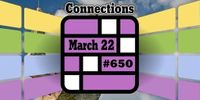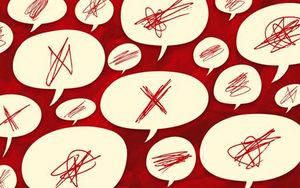In the latest edition of the New York Times Connections puzzle, game lovers have a fresh challenge to tackle. Released on March 22, 2025, the Connections puzzle #650 engages players in sorting a selection of 16 words into four distinct categories, an activity that promotes both vocabulary enhancement and logical reasoning skills. With a difficulty rating of 2.3 out of 5, this puzzle is designed to be accessible yet still stimulate the intellect.
The Connections game format invites players to arrange words into groups based on similar themes. This time around, the words players need to connect include Touchdown, Trifle, Trillion, Trombone, Trident, Trademark, Theremin, Tchotchke, Triangle, Television, Trinket, Trilobite, Timpani, Thingamajig, Tambourine, and Tuberculosis. As players dive into solving this puzzle, they must use their critical thinking to find the links between these varied terms.
For today’s attempts at puzzle #650, players have been provided with category hints to facilitate solving the puzzle quickly. The hints are as follows:
- Yellow: Musical instruments
- Green: Knickknack
- Blue: Words with the prefix meaning "three"
- Purple: Words abbreviated with "T" + letter
The intriguing aspect of this particular puzzle is that all the words begin with the letter T. Players grappling with today's challenge can apply some strategic thought to connect the dots successfully. One hint that has emerged from community discussions around the game reads:
"In order to win this one, you will need to be ready to sort sixteen words into four secret categories with no more than three mistakes allowed."
Players may find it useful to group the words they recognize quickly based on the hints. For example, the Yellow category focuses solely on musical instruments—this is where you'll find the Tambourine, Theremin, Timpani, and Trombone. It's a delightful mix that could easily catch players off-guard if they're not already familiar with all the instruments listed.
Moving onto the Green category, participants will delve into the realm of knickknacks, connecting terms like Tchotchke, Thingamajig, Trifle, and Trinket. A smart player will recognize that while Tchotchke may not be as commonly known, it refers to a trinket commonly used in home decor. As players navigate through these categories, strategies for grouping similar words become essential.
The Blue category requires knowledge of prefixes. Here, players will meet shapes and quantities—Triangle, Trident, Trillion, and Trilobite all fall under words related to the prefix meaning “three.” Don’t let the abundance of items starting with TRI throw you off!
Finally, the Purple category may present the most difficulty, featuring abbreviations that evoke a mix of memories and facts—this category includes Television, Touchdown, Trademark, and Tuberculosis. As puzzlers explore the connections, they may stumble upon amusing cultural references inherent in the terms—how many can instantly recognize tuberculosis as TB, yet may ponder how Touchdown translates to TD in casual sports lingo?
As players tackle these challenges, it becomes clear that engaging with the NYT Connections puzzle isn't just about success at solving; rather, it enhances vocabulary, comprehension, and critical thinking. Today's comments from players have expressed sentiments like:
"This puzzle looks very intimidating when you first pull it up, but it was much easier to me than similar puzzles in other Connections games."
With words flowing from one category to another, the player milieu fosters a spirit of collaboration, discussion, and learning that extends beyond the individual game itself.
As the Connections puzzle continues to captivate audiences with its blend of word play and cognitive challenge, players are encouraged to not only indulge in the satisfaction of completing the puzzle for the day but also to engage with the rich community that surrounds these games.
For those interested, further exploring past puzzles provides a fascinating glimpse into the evolving nature of language and connection, proving that every puzzle is a new puzzle for the mind to enjoy. Thus, as we embrace yet another week filled with words and connections, let's celebrate this playful act that spans across many cultures and communities.









